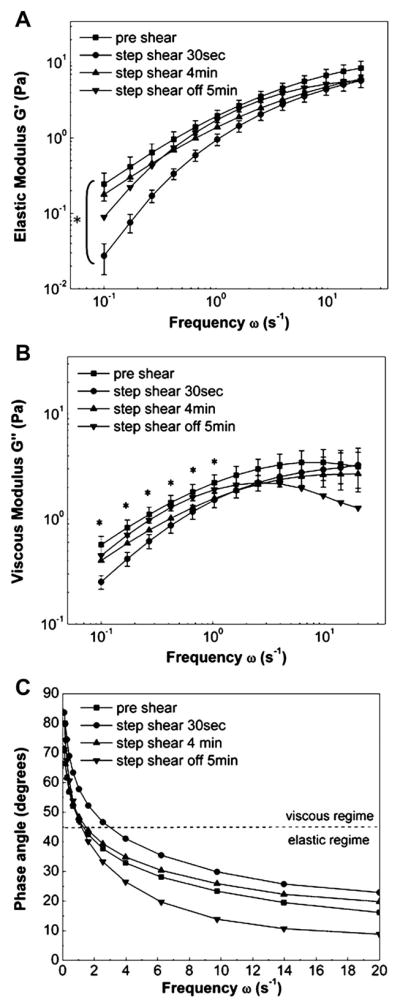Fig. 3.

Shear-induced adaptive microrheology. Frequency-dependent elastic (A) and viscous (B) moduli decreased rapidly after exposure to step shear of 0 to 10 dyn/cm2. After 4 min of shearing was completed, values returned to preshear levels. No change in rheology was seen after shear stress was removed. 1Pa = 10 dyn/cm2. Data are means ± SE; n = 6. *Significant differences between preshear and 30 s shear rheological moduli (P < 0.05) at all frequencies (A) and for indicated frequencies (B). Error bars for 4 min shear and 5 min postshear are not shown for clarity. C: frequency-dependent viscoelastic phase angles indicate that ECs cross over from the viscous to the elastic regime at frequency of 1 s−1. Imposition of step shear stress increases the crossover frequency to 3 s−1.
